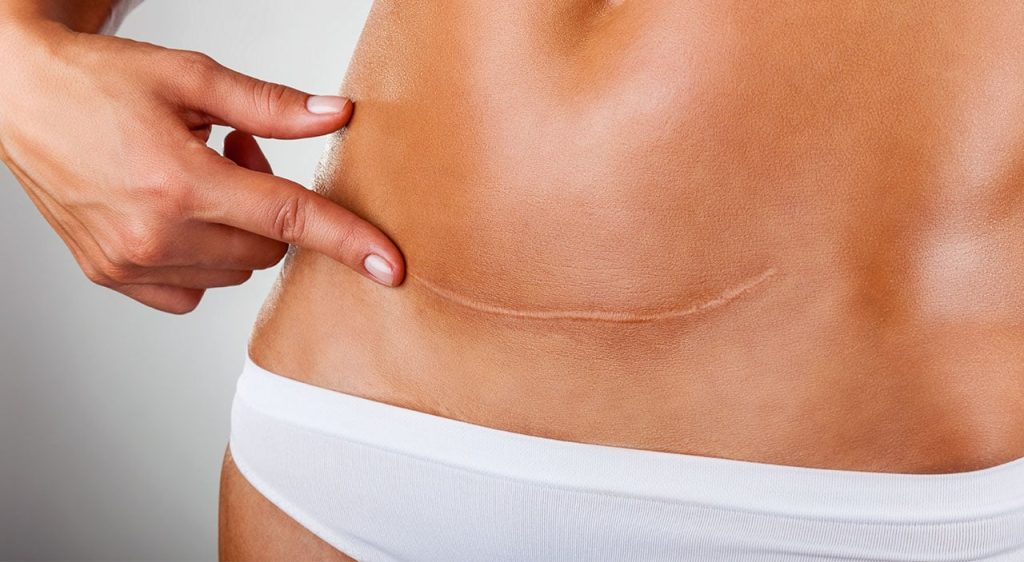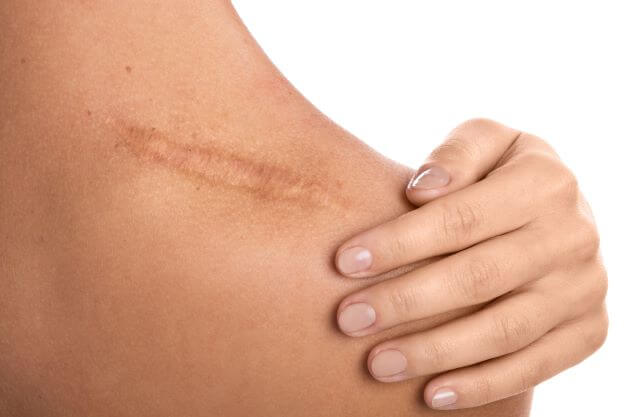Over 100 million people worldwide face the challenge of living with scars, pushing the demand for effective scar revision techniques such as skin grafting, topical treatments, stitches, and contractures to an all-time high. Scar revision isn’t just about enhancing appearance with stitches, topical treatments, and eds; it’s a journey towards regaining confidence, avoiding chap, and embracing one’s skin anew. With advancements in medical science, as noted by Elsevier eds, there are now more options than ever, including skin grafting, to make this journey successful. Whether due to surgery, injury, or acne, understanding the right approach to scar revision, which may include skin grafting, can be transformative, opening doors to not just physical but also emotional healing.
Understanding Scar Fundamentals
Scar Formation
Scars are the body’s way of healing after an injury. When skin gets damaged, the body works fast to repair it. This process often leaves a mark, known as a scar.
The skin starts healing by forming new collagen fibers. This is what makes up a scar. Over time, scars might fade but don’t always disappear completely.
Temporary vs Permanent
Temporary scars are those that fade over months to a couple of years. They often become less noticeable with time.
Permanent scars don’t fade much after they form. Their appearance can improve but they usually remain visible for life.
The difference lies in how deep and severe the wound was. Deeper cuts are more likely to leave permanent scars.
Influencing Factors
Several factors affect how scars form. Skin type is one of them. People with lighter skin may have less noticeable scars compared to those with darker skin tones.
Age also plays a role. Younger skin tends to heal faster and may scar less than older skin.
Wound care is crucial too. Proper care can help reduce scarring by preventing infection and promoting better healing.
Exploring Scar Revision Purposes
Psychological Impact
Scars can carry a heavy emotional burden. Many seek scar revision, as noted in ‘eds’ and ‘chap’ of Elsevier, to heal emotionally as much as physically. The sight of a scar may remind someone of a traumatic event or make them feel self-conscious, as noted in chap. 4 of eds. Elsevier’s publication.
Scar revision offers a chance to lessen these reminders. It’s not just about the physical appearance but also about improving mental well-being. People often report feeling more confident and less anxious after their scars are treated.
Functional Improvement
Some scars hinder movement or cause discomfort. In these cases, scar revision aims to restore functionality rather than aesthetics.
For instance, a tight scar across a joint might limit motion, making daily activities challenging. Through surgical intervention or other treatments, doctors can increase flexibility and reduce pain. This improvement in mobility is crucial for the patient’s quality of life.
Realistic Expectations
It’s essential to have realistic expectations when considering scar revision, eds chap Elsevier. No procedure can completely erase scars, but significant improvements are possible.
Patients should understand the limitations and potential outcomes before proceeding. A successful revision can make scars less noticeable and improve texture, but perfection is unattainable. Setting realistic goals ensures satisfaction with the results.

Types of Scars Treatable
Keloid Scars
Keloid scars grow beyond the original wound area, forming a raised, dark patch. They are more common in people with darker skin tones. Scar revision can help reduce their size and appearance, but they may not disappear completely. Early treatment is crucial for better outcomes.
They often require multiple treatments for significant improvement. Injections or laser therapy might be used to soften and flatten them.
Hypertrophic Scars
These scars are similar to keloids but stay within the wound boundaries. They appear as raised, red lines on the skin and can become less noticeable over time. Scar revision techniques, like steroid injections or surgery, can speed up this process.
It’s important to treat these scars early. This increases the chances of reducing their visibility.
Atrophic Scars
Atrophic scars create sunken areas on the skin, often resulting from acne or chickenpox. These types of scars respond well to treatments that stimulate healthy tissue growth beneath the scar. Options include fillers, laser therapy, and microneedling.
Such treatments, as noted in eds and chap of Elsevier, help raise the depressed areas to level with surrounding skin.
Burn Scars
Burn scars, as noted by chap in eds of Elsevier, pose a challenge due to their extensive damage to the skin. Complete removal is often not possible; however, revision can significantly improve function and appearance. Techniques vary based on scar severity and location.
Early intervention plays a key role in managing these challenging scars effectively.
Preparing for Scar Revision
Expert Consultation
Seeking a qualified dermatologist or plastic surgeon is crucial. They assess the scar to determine the best approach. This might include skin grafting or stitches.
It’s essential to discuss your expectations. They can guide you on what is achievable.
Pre-Treatment Care
Avoid sun exposure as it can worsen the scar’s appearance. Wear sunscreen daily, even on cloudy days.
Smoking cessation is critical. It enhances healing and reduces complications.
Medication Disclosure
Disclose all medications and supplements. Some may affect healing or increase bleeding risk during scar revision procedures.
Inform your doctor about any over-the-counter products you’re using. They might recommend stopping some before the procedure.
Overview of Treatment Methods
Treatment Range
Scar revision encompasses a broad spectrum of treatments. These range from minimally invasive options like injections and laser therapy to more involved surgical procedures. Each method aims to improve the scar’s appearance or alleviate discomfort.
Minimally invasive techniques are often the first step. They include laser treatments and microneedling, which help by stimulating collagen production. Surgical options might involve excision or grafting for deeper scars.
Technology Impact
Advances in technology have significantly enhanced scar revision outcomes. Laser therapy, for instance, can target various scar issues with precision, minimizing damage to surrounding tissues. Microneedling devices have also evolved, offering better control and efficiency.
These technologies enable tailored treatments based on scar type, location, and individual health needs. They offer hope for improved aesthetics and functionality, particularly in challenging areas.
Choice Factors
Selecting the right treatment involves considering several factors. The type of scar, whether it’s raised, depressed, or discolored, plays a crucial role. So does its location and how it affects movement or function.
Health considerations cannot be overlooked. For example, people prone to keloids may require different approaches than those dealing with contractures. A thorough evaluation helps ensure the chosen method aligns with the individual’s needs and goals.
Topical and Injectable Solutions
Silicone Sheets
Silicone gel sheets play a crucial role in scar management. They work by flattening and softening scars, making them less visible. The sheets are applied directly to the scarred area, under local anesthesia if necessary. This method is especially effective for raised scars.
They help maintain the moisture of the skin, which is vital for healing. Over time, the texture of the scar improves, blending more with the surrounding healthy skin.
Pressure Garments
Pressure garments are another non-invasive option. They’re typically used on larger areas of scarring. These garments apply steady pressure, which can reduce scar thickness and improve blood flow to the area.
This method is often recommended for individuals recovering from burns or surgeries where large portions of skin were affected. It’s a long-term treatment strategy, requiring consistent use over months.
Corticosteroids
Injectable treatments like corticosteroids target scar tissue buildup and inflammation. Administered directly into the scar, these injections can significantly reduce its appearance.
Corticosteroids work by breaking down excess collagen in the scar tissue. This process helps in reducing both the size and itchiness of scars over several sessions.
Growth Factors
Emerging topical treatments include growth factor serums. These serums promote healing by encouraging the regeneration of healthy skin cells at the site.
Growth factors signal to the body’s cells to repair damaged tissue, improving overall scar appearance. They can be particularly beneficial for scars that have caused changes in skin texture or color.
Resurfacing and Surgical Options
Laser Resurfacing
Laser resurfacing offers a non-invasive approach to improve scar appearance. It works by removing the top layer of skin, promoting new, healthy skin growth. This process can significantly enhance the texture and color of scars over time. Patients often see noticeable improvements after just a few sessions. The treatment is especially effective for scars that are not too deep.
Laser resurfacing has gained popularity due to its precision and reduced recovery times compared to traditional methods. It’s an excellent option for those looking to soften the visibility of scars without undergoing surgery.
Excision
Excision involves surgically removing the scar tissue, followed by stitching the skin together. This method is ideal for deep or severe scars that cannot be treated with surface-level treatments alone. By cutting out the damaged area, excision allows for the growth of new, healthier skin.
Though it may sound daunting, excision can offer a permanent solution for troublesome scars. It’s often reserved for cases where other treatments have failed to provide satisfactory results.
Grafting
Grafting is another surgical option where skin from another part of the body is used to cover the scarred area. This technique is particularly useful for large or complex scars that need more than simple removal. Grafting helps in restoring both function and appearance in severely damaged skin areas.
This method requires careful planning and skill but can dramatically improve outcomes for those with extensive scarring.
Combination Treatments
For optimal results, combining resurfacing techniques with surgical options often yields the best outcomes. This approach tailors treatment to individual needs, addressing both surface irregularities and deeper scar tissues effectively.
Combination treatments allow practitioners to leverage the benefits of each method, providing a comprehensive solution for scar revision. They illustrate modern dermatology’s ability to customize care, ensuring patients receive the most effective treatment plan for their specific type of scarring.
Final Remarks
Scar revision isn’t just about enhancing how you look; it’s a step towards regaining your confidence and comfort in your own skin. From understanding the basics, preparing for treatment, to exploring the wide array of solutions—both topical and surgical—you’re now equipped with the knowledge to make informed decisions about managing scars. Remember, the journey to smoother skin is personal and varies from one individual to another. Choosing the right treatment depends on the type of scar, your skin type, and your desired outcome.
Ready to take the next step? Consult a professional to discuss your options and tailor a treatment plan that suits your needs. Don’t let scars hold you back. Embrace the possibilities of scar revision and move forward with confidence. Your journey to reclaiming your skin starts now.
Frequently Asked Questions
What is scar revision?
Scar revision refers to treatments designed to improve or reduce the appearance of scars, making them less noticeable and enhancing skin texture.
Who can benefit from scar revision?
Individuals with visible scars from surgery, injuries, or acne that affect their confidence or skin’s overall appearance may find scar revision beneficial.
What types of scars can be treated?
Most types of scars, including keloid, hypertrophic, atrophic, and contracture scars, can be treated through various scar revision methods.
How should I prepare for a scar revision procedure?
Preparation typically involves following your doctor’s advice on avoiding certain medications and smoking to ensure optimal healing and results.
What are some common treatment methods for scar revision?
Treatment options range from topical and injectable solutions to more advanced techniques like laser resurfacing and surgical revision.
Are there non-surgical options for scar revision?
Yes, there are non-surgical options such as silicone sheets, injections, and laser therapy that effectively improve the appearance of scars without surgery.
How long does it take to see results from scar revision?
The time to see results varies depending on the treatment method but can range from immediately after injectable treatments to several months for surgical options.





